Intel Core 2 Chipset Power Consumption Shootout
by Anand Lal Shimpi on October 12, 2006 12:53 PM EST- Posted in
- CPUs
Since the introduction of Intel's 90nm Prescott core, power consumption has been at the forefront of any CPU related discussion. But as both AMD and Intel strive towards introducing more power efficient cores we must turn our attention elsewhere to find new areas where power savings are necessary. The GPU is next on the chopping block for power consumption, but we've still got a little time before both ATI and NVIDIA unveil their new high DirectX 10 parts fully equipped with very high power consumption. While we wait for the next-generation of powerful GPUs and quad-core CPUs to debut, we decided to take a look at the power consumption of an often overlooked component in the system: the chipset.
Dutifully playing its role as traffic cop in any modern system, the chipset has to deal with getting data from each and every high speed, high powered component in the system and directing it to the right place. Thankfully the amount of logic in a chipset is nothing near that of a CPU, but given its role in a high performance system, the chipset can easily be a notable consumer of power. The question is - are some chipsets better than others for power consumption?
There have been obvious examples in the past where chipsets varied dramatically in power consumption, like ATI's CrossFire 3200 chipset vs. NVIDIA's nForce 590 SLI, the latter of which consumed significantly more power. But what about more mainstream offerings, and in particular, mainstream chipsets that support Intel's Core 2 processors - is there a noticeable difference in performance, power consumption and overall performance per watt between them?
We're asking this question now because it is inevitably the first question we need answered before we can start doing (as close to) apples-to-apples comparisons between CPUs with regards to power consumption. We chose to start with Core 2 platforms since that's the hot topic these days and power consumption/performance per watt is a very compelling reason to consider Intel's Core 2 line of processors.
The Platforms
We picked the three most popular mainstream Core 2 chipsets currently available for this comparison: Intel's P965, Intel's 975X and NVIDIA's nForce 570 SLI Intel Edition.
Intel P965 |
Intel 975X |
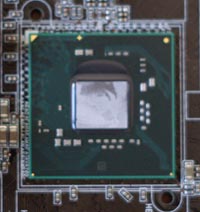 |
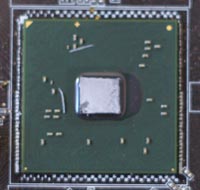 |
NVIDIA nForce 570 SLI |
|
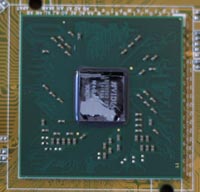 |
|
We will eventually add Intel's G965 to the mix but we'll save analysis of that chipset for our full review of the new integrated graphics core. These three chipsets represent the performance mainstream offerings any Core 2 purchaser would consider and a good starting point for these sorts of comparisons. Obviously there are other chipsets that we are interested to look at, for example VIA's PT880 and Intel's 945G, but we will have to save those for a later date in the interest of time.
As luck would have it, ASUS makes a motherboard based on all three chipsets we're interested in comparing today and thus we used all ASUS platforms for today's article.
Representing the Intel P965 chipset we have ASUS' P5B Deluxe:
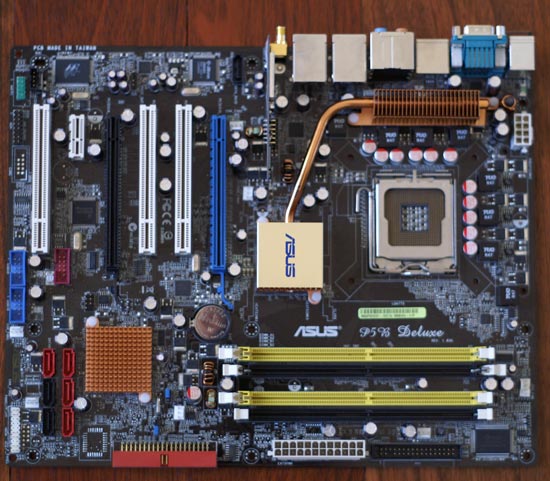
The ASUS P5W DH Deluxe, one of our first Core 2 motherboards, features Intel's 975X chipset:
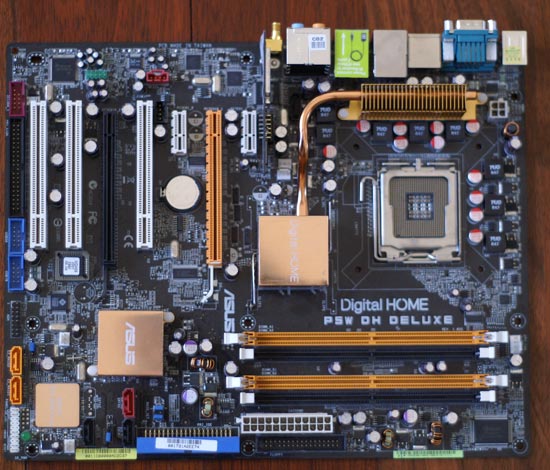
And finally we have ASUS' P5NSLI, a very affordable nForce 570 SLI solution:
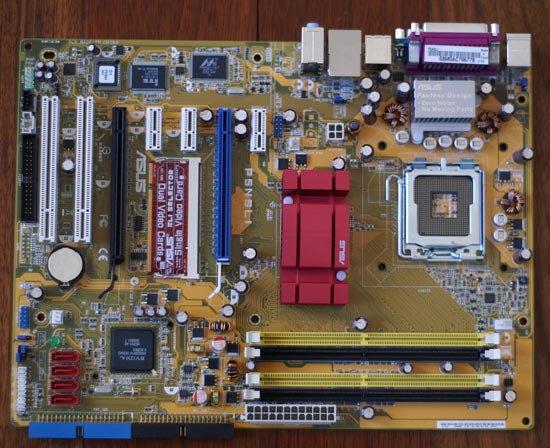
Note that today's comparison is merely one aspect of comparing these three platforms; things like price, I/O, and networking performance as well as multi-GPU support are all important considerations that go beyond the scope of this article. Our concern today is power consumption and thus that's what we will focus on.










44 Comments
View All Comments
GPz1100 - Friday, October 13, 2006 - link
The test in theory would be beneficial, but the article doesn't state exactly how or what was really measured.Not a very useful test then, flawed from the get go.
Plantemanden - Thursday, October 12, 2006 - link
This is no way to measure chipset power consumption. Two deluxe boards with 8-phase power versus one mainstream board with a mediocre 3-phase power system.The gains in 8-phase vs. 3-phase is enough to explain the difference we're seeing here.
Perhaps measuring the generated heat of each chipset could tell us something, but this is useless.
IntelUser2000 - Thursday, October 12, 2006 - link
Perhaps little component difference can make it up, but I doubt it. I've seen other power consumption benchmark which show that Intel chipsets consume the least power: http://www.goodwin.ee/sulo/Power2.htm">http://www.goodwin.ee/sulo/Power2.htm
Interesting quote:
One interesting thing that somewhat suprised me when testing K8 and P4 boards. P4 chipsets actually consume the least amount of power. VIA chipsets which have two chips besides the integrated northbridge come a very close second, but most surprisingly, Nvidia nForce 3 chipset, with its one sole chip beside the integrated northbridge, actually consumes a whole lot more than all the others. Especially on boards which use linear regulators to feed the northbridge. My own Chaintech VNF3-250 with a low power videocard consumes almost 50% more from the 3.3V rail than Intel branded i865 board with integrated video (which consumed 10W from 3.3V rail using a single 512MB DS stick). MSI branded KM800 board with integrated video came very close to Intel board though (also with a single 512MB DS stick).
Plantemanden - Thursday, October 12, 2006 - link
Don't get me wrong, I prefer intel chipsets by far. I'd especially like to get my hands on the P965.BUT!
As it says in your quote: "linear power regulators". Those that just waste whatever voltage difference there is are by far the cheapest. So would it be surprising to find such regulators on a motherboard that is half as expensive (give or take) than the other two? I think not.
the onboard power regulation and conditioning is very important, and will become ever more important with lower and lower chip voltages, as the current increases.
IntelUser2000 - Friday, October 13, 2006 - link
http://www.techreport.com/reviews/2006q3/core2-chi...">http://www.techreport.com/reviews/2006q3/core2-chi...
Awesome, but take a look above again. Nforce 570 SLI, is lower power than Nforce 4 SLI, which is still higher than P965 and 975X.
http://www.techreport.com/reviews/2006q2/am2-chips...">http://www.techreport.com/reviews/2006q2/am2-chips...
Not only that, we see Nvidia's chipset just suck in terms of power consumption.
Plantemanden - Saturday, October 14, 2006 - link
Yeah, perhaps you're right.Though they should really check the voltage of the cpu with a multimeter. There is an uncertainty on the voltage to the cpu, that could easily make up the 5 or so watts
IntelUser2000 - Friday, October 13, 2006 - link
Look at this: http://www.gamepc.com/labs/view_content.asp?id=c2d...">http://www.gamepc.com/labs/view_content.asp?id=c2d...P5B is even lower than P5B Deluxe
Then this:
http://www.techreport.com/reviews/2006q3/foxconn-g...">http://www.techreport.com/reviews/2006q3/foxconn-g...
Looks like other P965 chipset boards can do even better than P5B.
http://www.techreport.com/reviews/2006q3/core2-chi...">http://www.techreport.com/reviews/2006q3/core2-chi...
With Nforce 570 SLI board included. Asus P5NSLI with Nforce 570 is 3-phase, and the P5N32-SLI SE Deluxe with Nforce 4 SLI chipset is 8-phase, but the Nforce 4 version consumes more power. I guess 3 and 8 phases aren't that big of a difference. The Gigabyte version mentions Quad Triple Phase with "virtual 12-phase" but the Foxconn with 3-phase(http://www.tomshardware.com/2006/05/22/six_975x_en...">http://www.tomshardware.com/2006/05/22/...ds_for_t... manages to achieve the lowest power consumption too. What's up with that?? I guess its because Intel chipsets do consume less power, and Nvidia's consume a lot in general.
Isn't it also strange how nobody else but Intel documents their chipsets so detailed?? I can't find ANYTHING in Nvidia/Via/ATI/SIS site for their chipsets other than the "product brief/overview etc".
daos - Thursday, October 12, 2006 - link
Im sorry guys but this is lame. I usually love your articles but this one is useless to me. I mean we are talking maybe 8% difference between chipsets? Thats almost margin of error. Besides, its not like we are talking 300W per chipset here.I guess I was expecting more.
Thanks
ATWindsor - Friday, October 13, 2006 - link
10 watts diffrence just from chipsets is quite a lot IMHO, its about as much as a harddisk, and can be a real considiration in a quiet and/or low-power setup (combinde with cooling soution of course).raymo - Thursday, October 12, 2006 - link
Your data and graphs are misleading. You have 1 part in 1000 information you have logged on performance and power. When you have a ratio, that ratio is still accurate to 1 part in 1000. Instead, you truncate the graphics to 1 part in 100, and lots of things look the same. This is wrong!